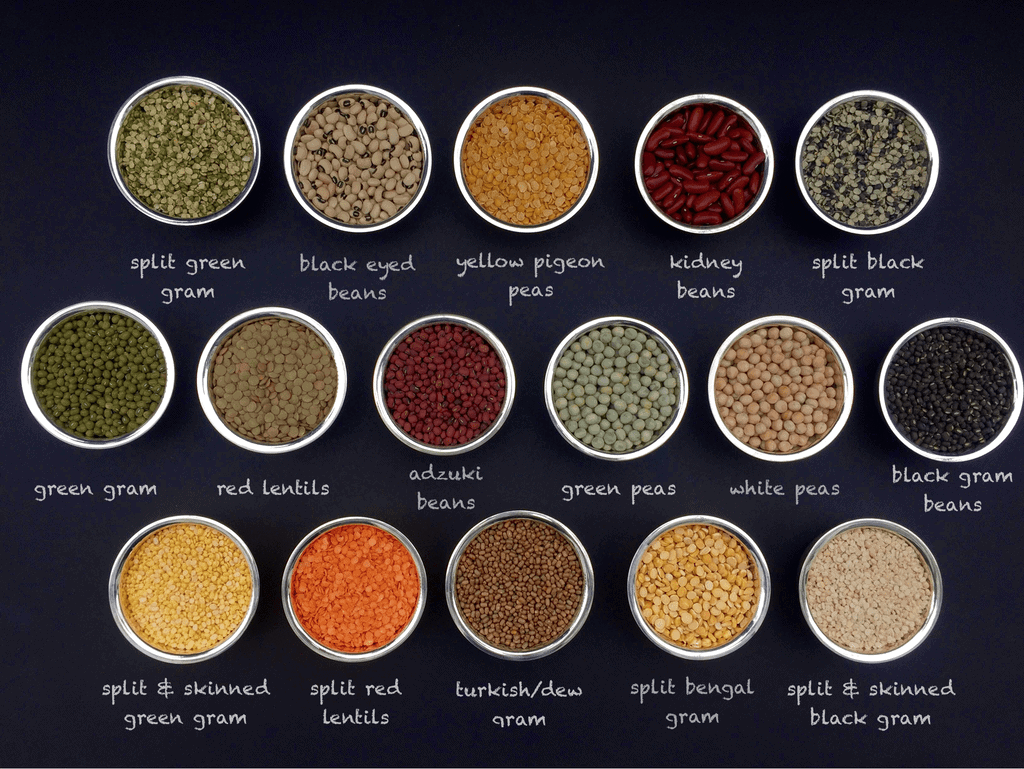Agriculture
Global Pulses Conference
- 21 Feb 2024
- 7 min read
For Prelims: National Agricultural Cooperative Marketing Federation of India Ltd, Global Pulse Confederation, Top Pulses Producing States, Minimum support price, National Food Security Mission (NFSM)-Pulses, Pradhan Mantri Annadata Aay SanraksHan Abhiyan (PM-AASHA) Scheme, Price Stabilization Fund
For Mains: Status of Pulse Production in India, Concerns Related to Pulse Production in India.
Why in News?
The recent Global Pulses Conference, an annual gathering of pulses producers, processors, and traders, was recently jointly organised by the National Agricultural Cooperative Marketing Federation of India Ltd. (NAFED) and the Global Pulse Confederation.
- India is aiming to achieve self-sufficiency in pulses by 2027, focusing on expanding cultivation and supplying new varieties of seeds.
What is the Global Pulses Conference?
- The Global Pulse Confederation (GPC), represents all segments of the pulse industry value chain from growers, researchers, logistics suppliers, traders, exporters and importers to government bodies, multilateral organisations, processors, canners and consumers.
- Its membership includes 24 national associations and over 500 private sector members.
- It is based in Dubai and licensed by the Dubai Multi Commodity Centre (DMCC).
What is the Status of Pulse Production in India?
- About: India is the largest producer (25% of global production), consumer (27% of world consumption) and importer (14%) of pulses in the world.
- Pulses account for around 20% of the area under food grains and contribute around 7-10% of the total foodgrains production in the country.
- Top Pulses Producing States: Madhya Pradesh, Maharashtra, Rajasthan, Uttar Pradesh and Karnataka.
- Main Varieties: Pulses are grown throughout the agricultural year.
- Rabi Pulses (contribute over 60%): Gram (chickpea), Chana (Bengal gram), Masoor (lentil), Arhar (pigeon pea).
- Kharif Pulses: Moong (green gram), Urad (black gram), Tur (arhar dal).
- Rabi crops require mild cold climate during sowing period, during vegetative to pod development- cold climate and during maturity/ harvesting - warm climate.
- Kharif pulse crops require a warm climate throughout their life from sowing to harvesting.
- Major Export Destinations (2022-23): Bangladesh, China, United Arab Emirates, USA and Nepal.
- Significance:
- Nutritional Powerhouses: Pulses are rich in protein, fibre, vitamins, and minerals, providing essential nutrients for human diets.
- Soil Enrichment: They fix nitrogen in the soil, improving fertility and reducing the need for synthetic fertilisers due to their leguminous nature.
- Climate Smart Crop: Pulses are drought-tolerant (water-efficient) crops and have a lower carbon footprint compared to many other crops, contributing to sustainability.
- Crop Health and Rotation: Including pulses in crop rotations enhances soil structure, reduces disease cycles, and suppresses weeds, promoting healthier agricultural systems.
- Related Concern:
- Yield Gap: Lower productivity of pulses in India compared to other major producers, causing dependence on imports to meet demand.
- Farmers experience reduced earnings due to lower pulse yields per acre, despite the higher minimum support price (MSP).
- Lack of Focus: Historical emphasis on rice and wheat cultivation led to insufficient R&D and infrastructure for pulses.
- High Import Dependence: India needs to import certain pulses despite being the largest producer to meet its domestic demand, impacting self-sufficiency.
- Yield Gap: Lower productivity of pulses in India compared to other major producers, causing dependence on imports to meet demand.
- Related Government Initiatives:
- National Food Security Mission (NFSM)-Pulses
- Pradhan Mantri Annadata Aay SanraksHan Abhiyan (PM-AASHA) Scheme
- Price Stabilization Fund
- Dedicated Portal for Tur Dal Procurement: Through which farmers can register and sell their produce to NAFED and National Cooperative Consumers' Federation of India Ltd. (NCCF) at a minimum support price or market price.
What is NAFED?
- National Agricultural Cooperative Marketing Federation of India Ltd. was established on the auspicious day of Gandhi Jayanti on 2nd October 1958.
- It is registered under the Multi State Co-operative Societies Act.
- It is an apex organisation of marketing cooperatives for agricultural produce in India.
- It is currently one of the largest procurers of agricultural products like onions, pulses, and oilseeds.
Way Forward
- Towards Second Green Revolution: Facilitating the availability of certified high-yielding, disease-resistant pulse varieties adapted to local agro-climatic conditions.
- Encouraging seed banks, community seed systems, and public-private partnerships to ensure the timely availability of quality seeds to farmers, which is essential for enhancing pulse production and productivity.
- Product Diversification and Value Addition: Developing value-added products like pulse flours, snacks, and protein supplements to expand market reach and attract new consumers.
- Comprehensive Farmer Support Programs: Implementing comprehensive support programs for pulse farmers, including access to credit, insurance coverage, and extension services.
- Strengthening farmer producer organisations (FPOs) to empower farmers collectively and enhance their bargaining power in the market.
UPSC Civil Services Examination, Previous Year Question (PYQ)
Prelims
Q. With reference to pulse production in India, consider the following statements: (2020)
- Black gram can be cultivated as both kharif and rabi crops.
- Green-gram alone accounts for nearly half of pulse production.
- In the last three decades, while the production of kharif pulses has increased, the production of rabi pulses has decreased.
Which of the statements given above is/are correct?
(a) 1 only
(b) 2 and 3 only
(c) 2 only
(d) 1, 2 and 3
Ans: (a)
Mains:
Q.1 What are the major reasons for declining rice and wheat yield in the cropping system? How crop diversification is helpful to stabilize the yield of the crops in the system? (2017)
Q.2 Mention the advantages of the cultivation of pulses because of which the year 2016 was declared as the International Year of Pulses by United Nations. (2017)





